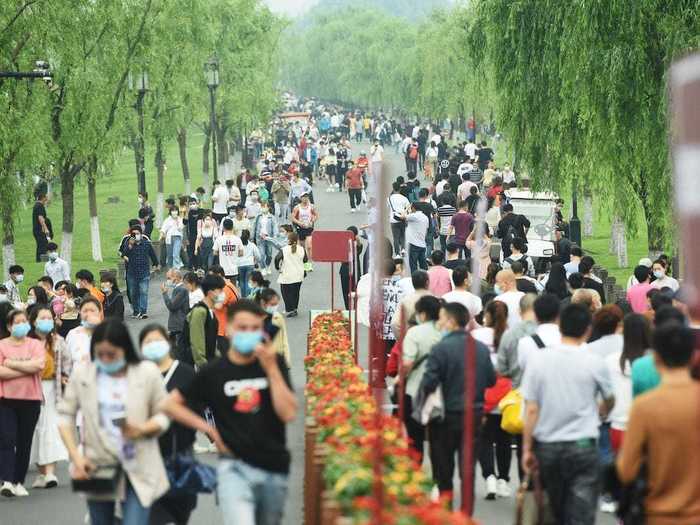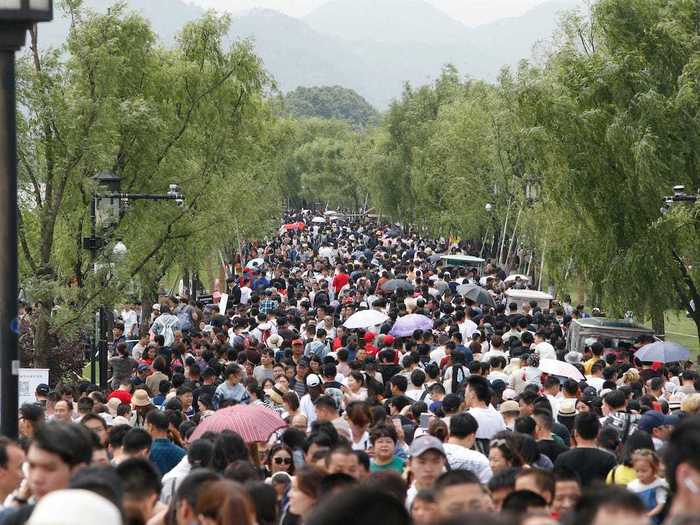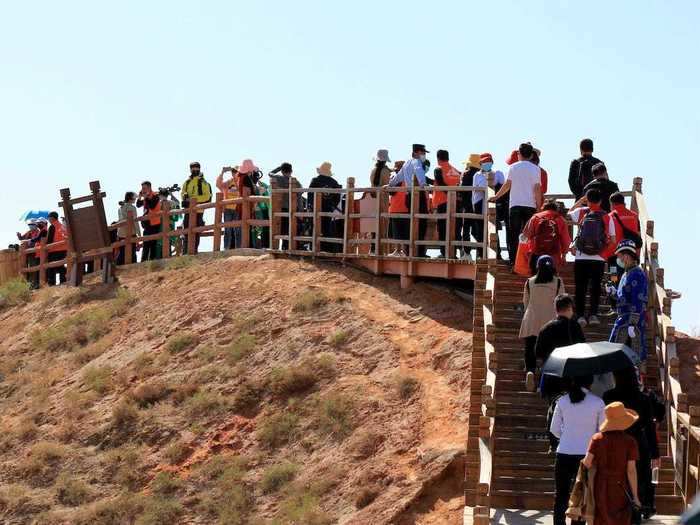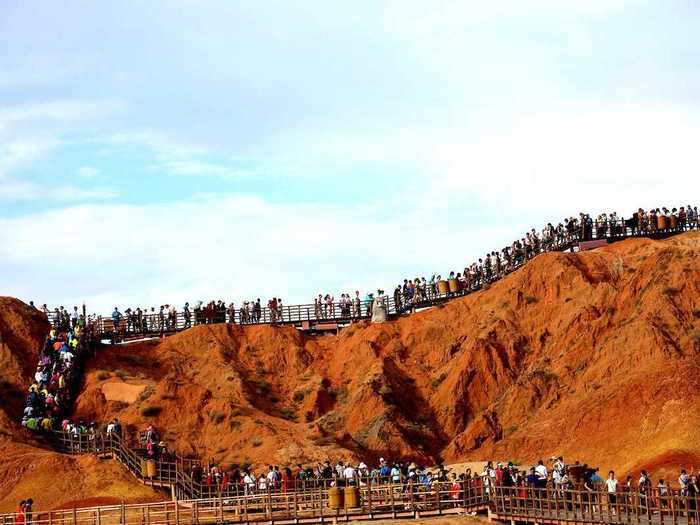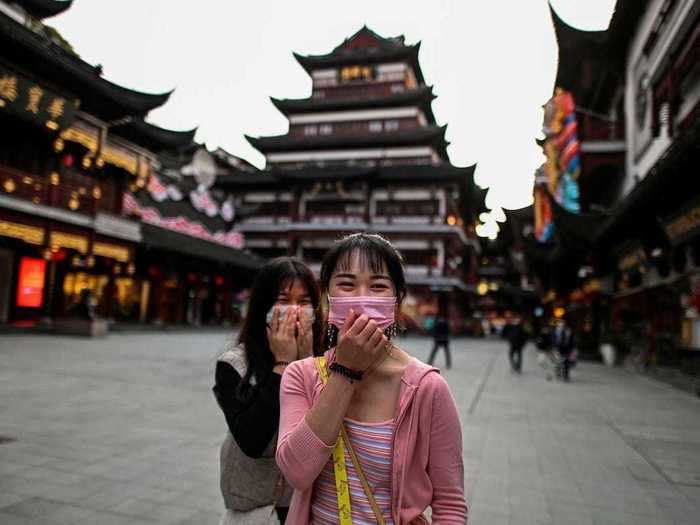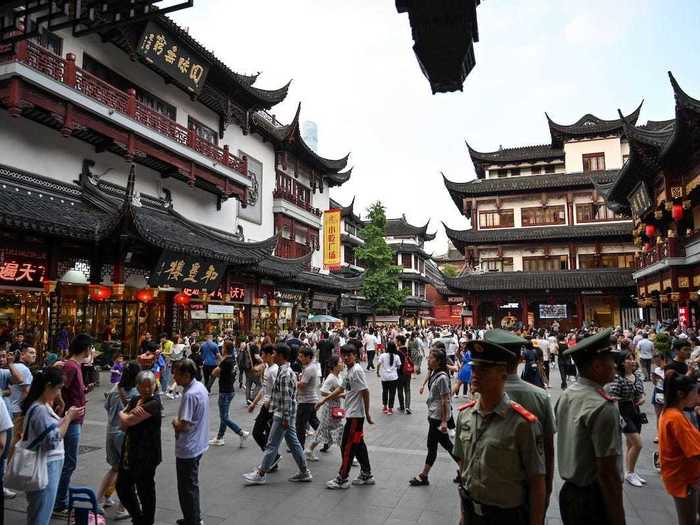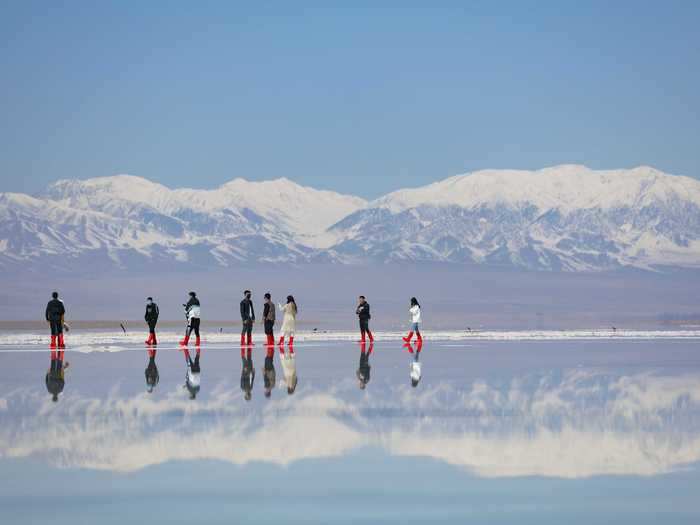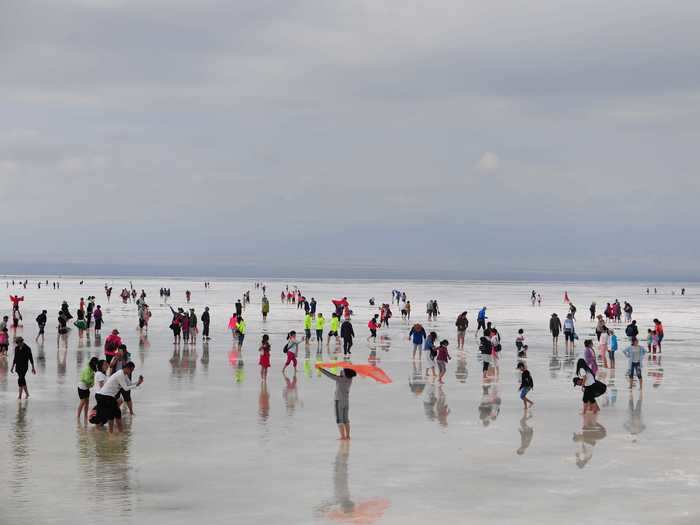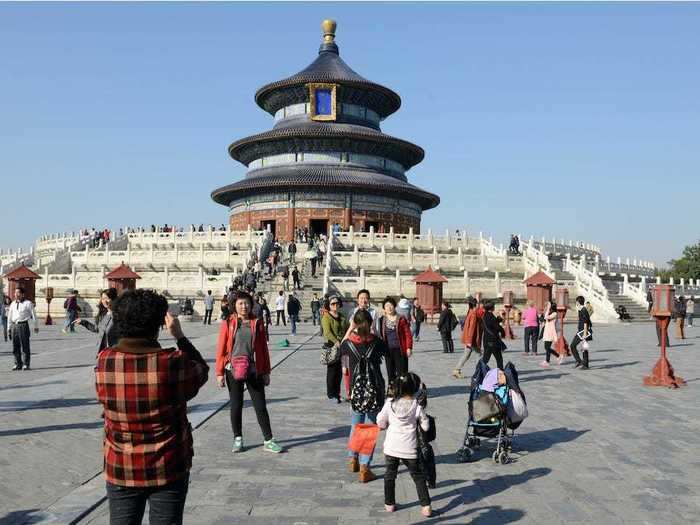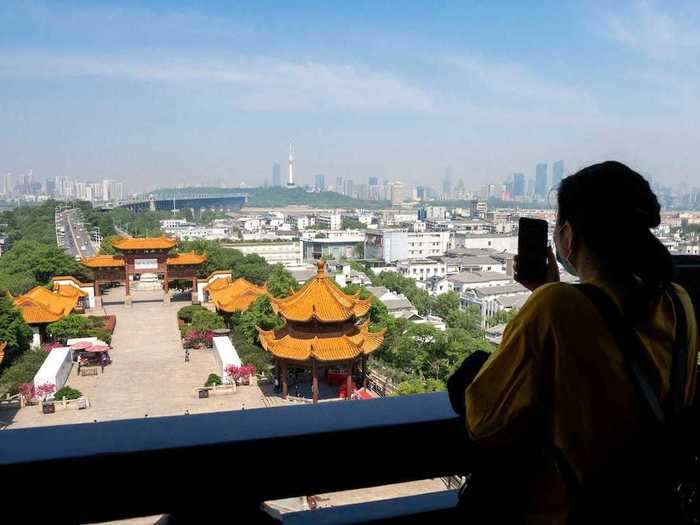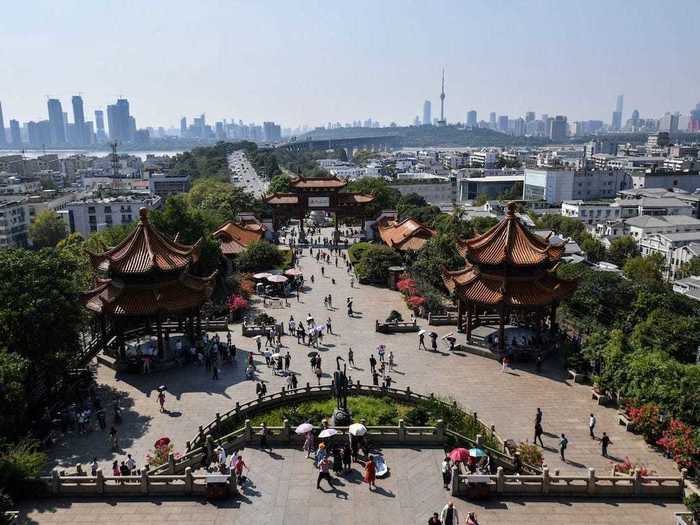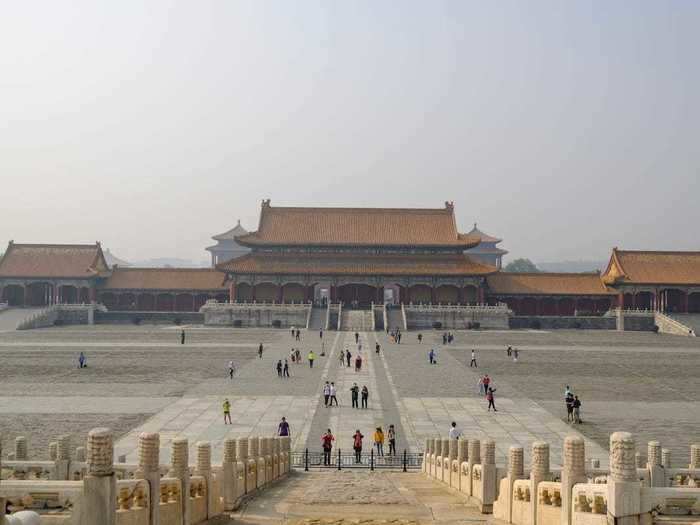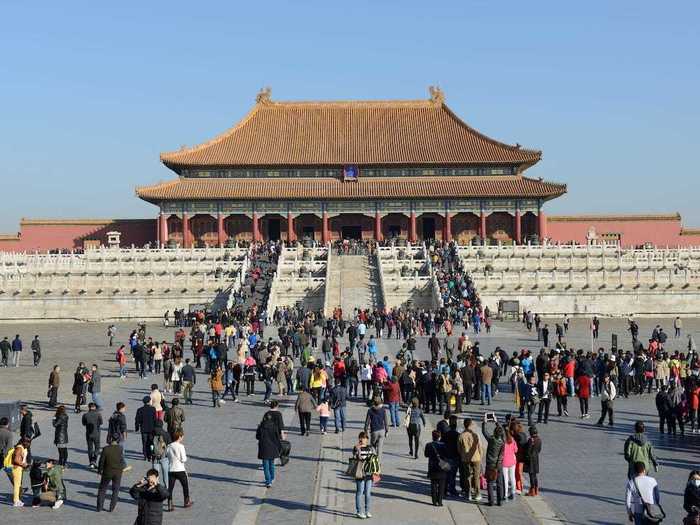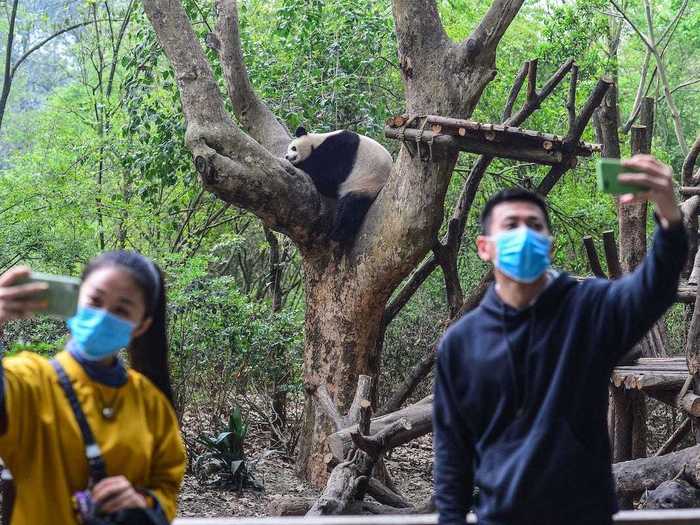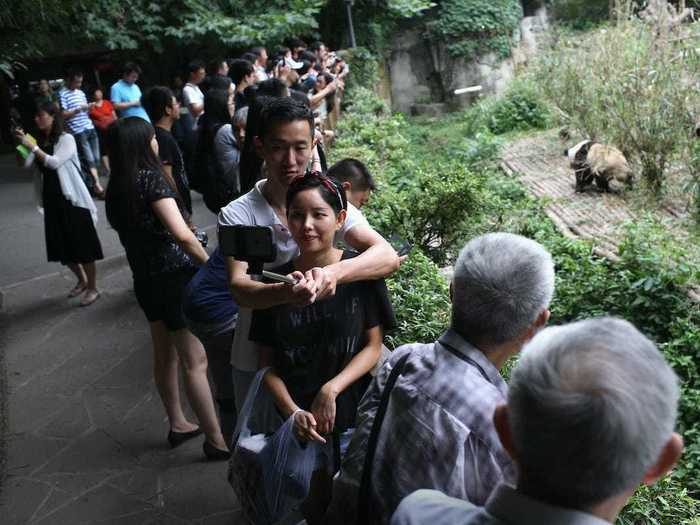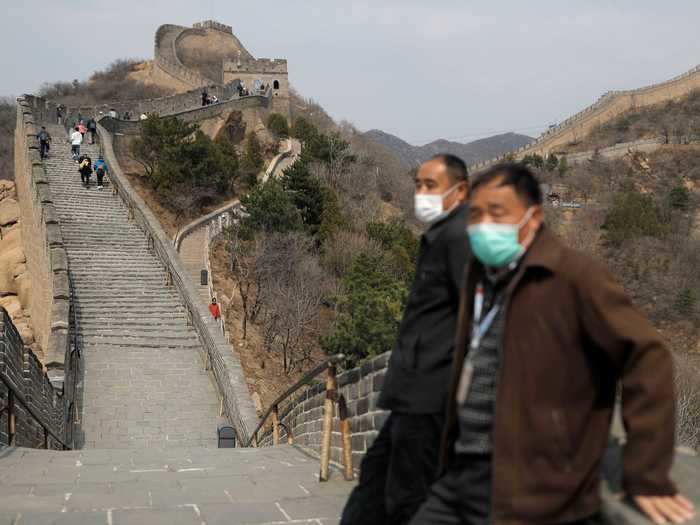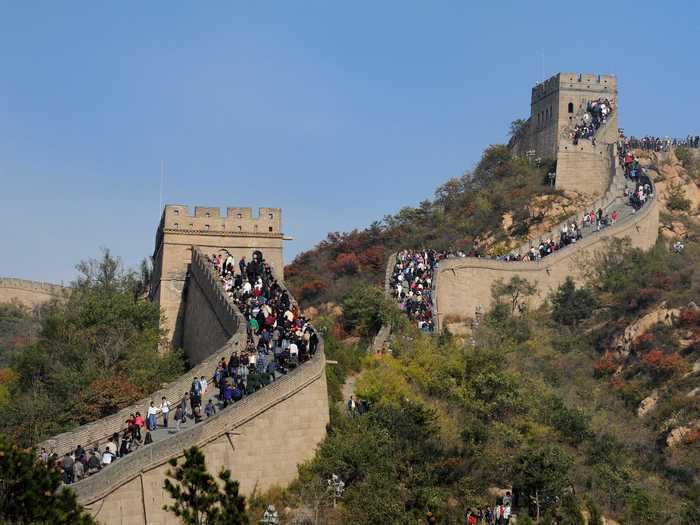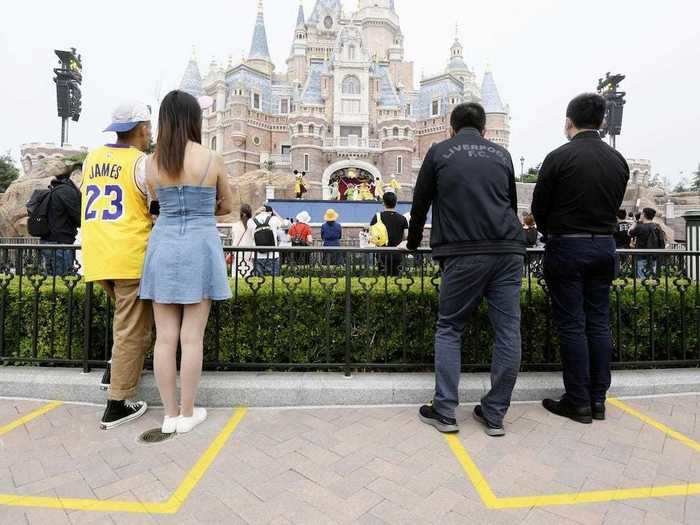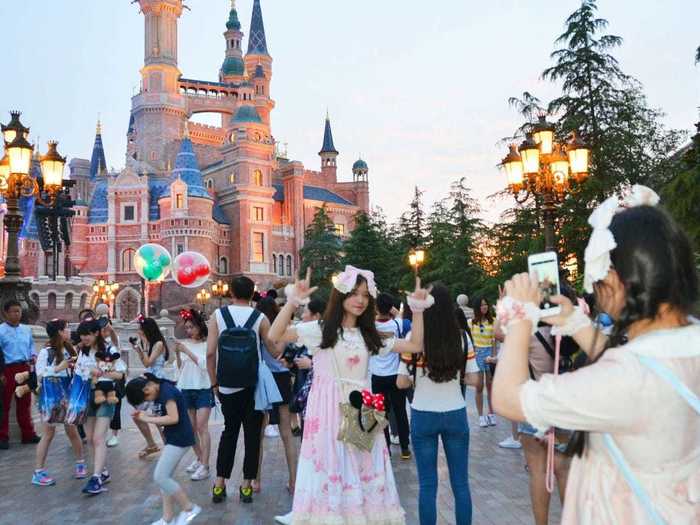Many of the popular tourist attractions have put a limit on the number of visitors allowed at the site.Frédéric Soltan/Getty Images/DI YIN/Getty Images
- Attractions across China have slowly reopened as the country lifts its lockdown orders.
- Many of these locations have capped the number of visitors and require people to wear masks and complete temperature checks.
- At attractions without visitor caps, crowds can still be found.
- Visit Insider's homepage for more stories.
Millions of people travel to China every year. According to Forbes, the country welcomed 60.7 million visitors in 2017.
That was all put on hold at the beginning of this year. As China closed its borders of Wuhan on January 23, tourist attractions, monuments, and parks across the country closed their doors.
Months later, the country has slowly begun to reopen. With that, tourist attractions unlocked their doors and welcomed domestic visitors.
The Great Wall of China was one of the first attractions to reopen on March 24. Since then, other destinations, like the Forbidden City and Yellow Crane Tower, have followed.
Many of these destinations have capped the number of visitors allowed into each location. The Badling section of the Great Wall of China reduced the number of visitors by 70%.
In addition to the population caps, attractions may require visitors to wear masks or complete temperature checks.
While some locations have a stark difference in how many people are visiting, other places were quickly packed after China's lockdown orders lifted.
Read the original article on
Insider
While there are clearly fewer visitors, the park was still packed with people celebrating the holiday this year.
This photo was taken during International Worker's Day on May 1.
Barcroft Media/Getty Images
People enjoyed springtime and sun for the first time in months at West Lake.
Hangzhou's West Lake is a popular destination during International Worker's Day.
This photo was taken on May 2, 2019, during International Worker's Day.
VCG/Getty Images
West Lake has many cultural ties to poems and literature throughout China's history.
After lockdowns lifted, tourists still flocked to the park when it reopened.
This photo was taken after the park reopened on May 1.
Barcroft Media/Getty Images
Tourists couldn't resist the beauty.
Many reopenings aligned with the country's four-day International Worker's Day holiday. The holiday started on May 1, and it's designed to celebrate workers' contributions to the country.
Hikers from around the world visit the Zhangye National Geopark, which is home to colorful mountains.
This photo was taken on August 7, 2018.
VCG/Getty Images
Located in Northwestern China's Gansu Province, the national park has colorful mountains with contrasting stripes. Hikers come to trek these technicolor rocks.
Festivals have been postponed or canceled and the bazaar sits largely empty.
Just a few people walk through the bazaar on March 23.
HECTOR RETAMAL/Getty Images
Although the bazaar didn't close, it remained largely empty while individuals stayed home. Now, a few people venture back out to the area.
The Yuyuan Garden and Bazaar in Shanghai are known for hosting cultural festivals.
People walk through the garden on June 7, 2019, the day of the Dragon Boat Festival.
HECTOR RETAMAL/Getty Images
The garden was built by the Ming Dynasty more than four centuries ago. Millions of visitors wander through the garden and its surrounding area each year.
Now, only domestic travelers visit the salt flats.
Tourists visited the lake when it reopened on April 26.
Xinhua News Agency/Getty Images
In need of some fresh air, visitors set out to the lakes when it reopened in April.
The Chaka Salt Lake in Qinghai Province spans 65 square miles and welcomes visitors from around the world.
Tourists play in the salt lake on August 12, 2016.
VCG/Getty Images
The popular natural attraction brings millions of tourists to the province each year. On a sunny day, visitors can take mind-bending photos.
The Temple of Heaven, a UNESCO World Heritage Site, partially reopened in April.
Two visitors walk up the steps to the Hall of Prayer for Good Harvests at the Temple of Heaven in Beijing on April 29.
Xinhua News Agency/Getty Images
The temple reopened three of its main buildings in March. People can still visit the park, although they're required to book in advance online.
The Temple of Heaven in Beijing is one of the city's most popular religious sites.
The Hall of Prayer for Good Harvests at the Temple of Heaven.
Frédéric Soltan/Getty Images
According to China Highlights, the temple is the most important of Beijing's imperial temples. The Temple of Heaven Park is about 670 acres, and one of the most prominent buildings is the Hall of Prayer for Good Harvests.
A few visitors climbed the 168-foot tower when it reopened in April.
This photo was taken on April 29, 2020.
Xinhua News Agency/Getty Images
Every person who visits the tower reserves a spot online and wears a mask.
Yellow Crane Tower in Wuhan, China, stands as a symbol for the city.
This photo was taken on September 7, 2019.
HECTOR RETAMAL/Getty Images
The Yellow Crane Tower, or Huanghelou, is one of Wuhan's most popular landmarks. It was built during China's Three Kingdoms Period in 233 A.D.
Now, the country is only allowing 5,000 people to visit each day.
The Forbidden City reopened in early May.
DI YIN/Getty Images
The government implemented strict guidelines for visitors. Floors are marked where people should stand, everyone is required to wear a mask, and officers guide visitors along designated routes, according to Lonely Planet.
The Forbidden City in Beijing, China, used to have 80,000 visitors a day.
The Forbidden City typically welcomes 16 million people a year.
Frédéric Soltan/Getty Images
The city was home to many Chinese emperors. It's now home to China's largest collection of ancient buildings.
The research center reopened to the public on March 25.
Wearing masks, tourists explore the center when it reopened in March.
STR/Getty Images
The base held a welcoming ceremony to encourage visitors to come and see the pandas, which haven't interacted with tourists in months.
People travel to the Chengdu Panda Research Base to see China's national animal: the giant panda.
In 2016, the base welcomed 3.5 million visitors.
John Moore/Getty Images
The Chengdu Panda Research Base is located in China's Sichuan province. This province is home to the majority of the world's endangered giant pandas, according to the base's website.
The wall reopened, and visitors are required to wear masks and have temperature checks.
Visitor numbers have been reduced by 70% in the Badling section of the wall, one of the wall's most famous areas.
Thomas Peter/Reuters
The Great Wall of China is one of the country's most popular attractions.
Especially on national holidays, the Great Wall of China is packed with visitors.
Shutterstock
The landmark is so popular, officials put a 65,000-person cap on how many people could enter each day last June.
Disneyland Shanghai was the first Disney park worldwide to reopen.
The park is operated at 20% capacity.
Kyodo News/Getty Images
The park reopened on May 11 and is welcoming 16,000 visitors a day, Reuters reported. Guests were required to complete temperature checks, wear masks, and remain socially distant. Yellow taped boxes filled the park's sidewalks indicating where guests should stand.
Disneyland Shanghai had a capacity of 80,000 visitors before it temporarily shut down in January.
Visitors would crowd the Disney castle to take pictures.
Kyodo News/Getty Images
Disneyland Shanghai was a popular attraction for both domestic and international travelers. Due to the coronavirus, the park temporarily closed on January 25.

